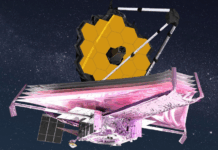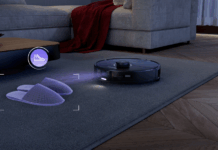
Both beginners and professional traders can operate the stochastic oscillator. It may assist increase trade accuracy and finding successful entry and exit points by combining it with other technical analysis tools including, trendlines, moving averages, and support and resistance levels.
The stochastic oscillator can be defined as a Forex indicator that, over a timeframe, holds a comparison between a security’s previous closing price range, the highest and the lowest. It outputs readings oscillating from 0–100, which indicates the momentum of security. The signals generated include overbought and oversold.
The readings are percentages that represent the trading range of security. If it shows 0, it refers to the lowest point of the trading range within a time period, whereas 100 refers to the highest point.
The Formula for Stochastic Oscillator
You can calculate the stochastic oscillator using the formula discussed below:
%K =[(C – L14)/(H14 – L14)] x 100
%D = 3-day SMA of %K
- K stands for the last closing price
- L14 stands for the lowest traded price,
- H14 stands for the highest traded price.
The stochastic oscillator’s default setting is 14 time periods.
The Creator Dr. George Lane
In the late 1950s, Dr. George Lane created the stochastic oscillator to be used in the technical analysis of securities. He was among the first to publish research articles on the application of stochastics. He felt the indicator might collaborate with Fibonacci retracement cycles or Elliott Wave theory to produce profitable results.
The stochastic oscillator, according to Lane, reflected the price movement momentum of an asset. It is not a price trend indicator in the same way that a moving average indicator is. Within a certain span of time, the oscillator measures the location of a security’s closing price to the top and low (max and min) of its price bracket.
How Is Stochastic Used?
The stochastic oscillator has found its uses in the following applications:
Determine If the Market Is Overbought or Oversold
When the stochastic value exceeds 80, it indicates an overbought condition. Market oversold circumstances are indicated by readings below 20. When the oscillator reading rises over 80 and subsequently falls below 80, a sell signal is created.
When the oscillation falls below 20 and then returns above 20, it indicates a buy signal. Overbought and oversold levels indicate that the price of an asset is at the peak or base of its price action for the time period in question.
Divergence

Whenever a securities price makes a new peak or low that is not represented in the stochastic oscillator, this is known as divergence.
Bearish: If the price rises to a new high, the oscillator does not rise to the same level. This is an example of bearish divergence, which might indicate a market reversal from an uptrend to a downtrend is imminent. The oscillator’s inability to reach a new high in tandem with price movement suggests that the uptrend’s strength is starting to weaken.
Bullish: Likewise, a bullish divergence happens when the market price reaches a new bottom, but the oscillator does not. Bullish divergence suggests the possibility of a market turnaround to the upside shortly.
It’s worth noting that the stochastic oscillator may provide a divergence signal before price movement reverses direction. When the oscillator signals bearish divergence, for example, the price may continue to go higher for several trading days before reversing. This is why Lane advises waiting for some confirmation of a market reversal before initiating a trade. Divergence alone should not be used to make trades.
Crossovers
The intersection of the fast stochastic line with the slow stochastic line is referred to as a crossover. The 0%K line is the fast stochastic line, while the %D line is the slow one. This is a bullish scenario when the %K line contacts the %D line and crosses above it. The %K line crossing upwards to below the %D stochastic line, on the other hand, indicates a bearish sell signal.
Limitations
The stochastic oscillator’s main flaw is it has been found to create misleading signals. This occurs when the indicator generates a trading signal, but the price does not follow through, resulting in a lost transaction. This might frequently happen during turbulent market circumstances.
Using the price trend as a filter, where signals are only accepted in the same direction as the trend, is one approach to aid this
Conclusion
The stochastic oscillator is a common momentum indicator that is extensively utilized. On the other hand, the oscillator is prone to producing misleading signals, which can be solved by using it in conjunction with other technical indicators.

















